In French there is something called le passé simple. It’s not easy for anglophones to understand because it is entirely non existent in the English language. Le passé simple is a verb tense used for a definitive event in the past, something that is over, that is done. But it’s more ambiguous than that. Some people will say that it can only be used to describe events in the distant past. Others will say that events told in le passé simple are not necessarily remote. But don’t confuse it with the “simple past” in English. Ironically, it is not that simple. In fact, for me that’s sort of the beauty of it — it’s open to interpretation, as if the past is all at once over, and yet still present.
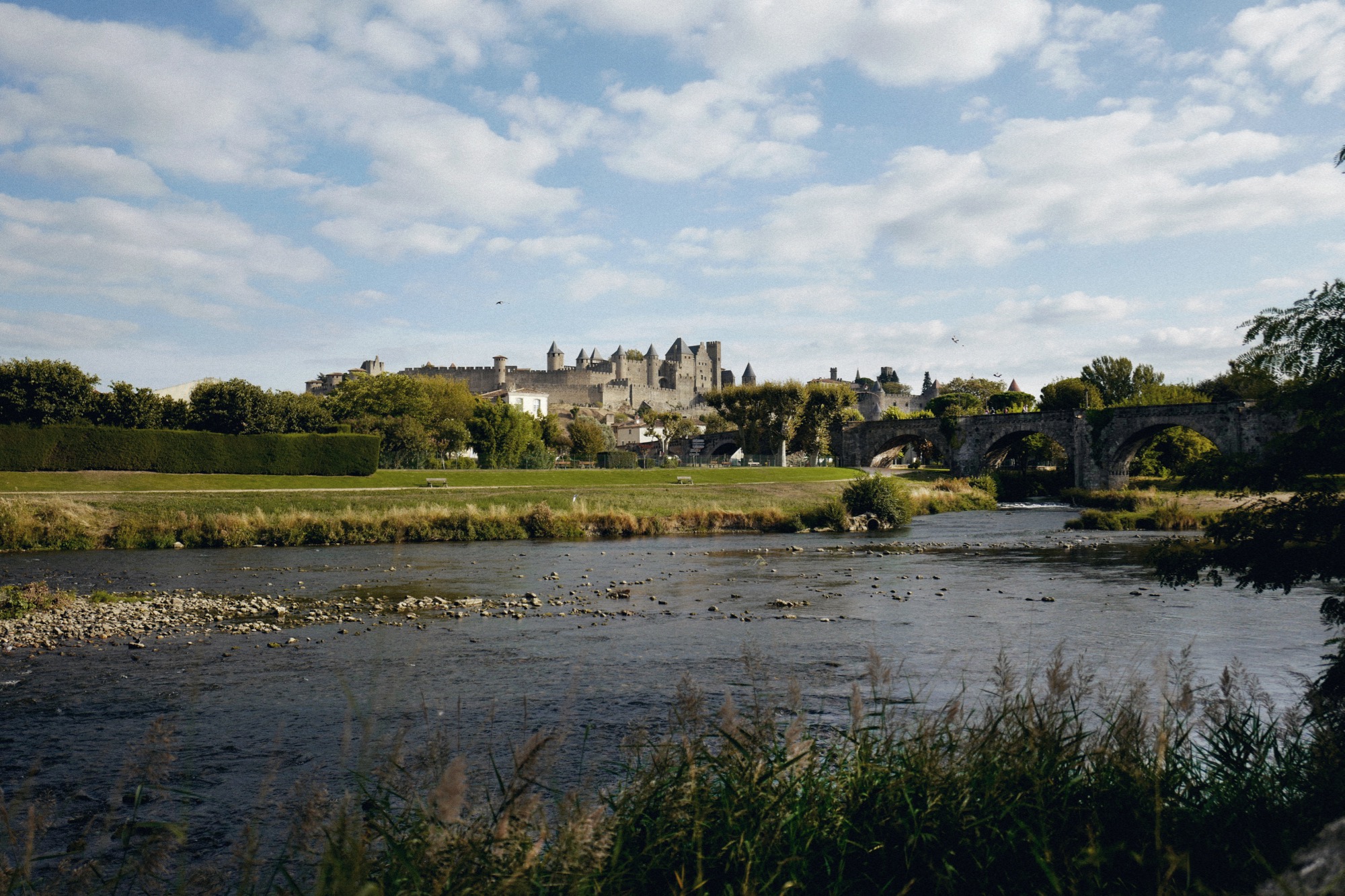
The most peculiar thing about it though is that it’s only ever written. People stopped speaking in it sometime around the early 19th century. And so it has become a traditional literary language. Imagine a character we know to be existing in the past recounting something to us in the present, as though it’s happening to them now. However, we know them to be living in the past. Now imagine a whole tense for just this sort of situation, that is more grammatically precise and yet poetically open. Le passé simple somehow manages to make sense of a time warp, this conundrum of existing in multiple times at once through literature, history, art, storytelling…on a page at least.
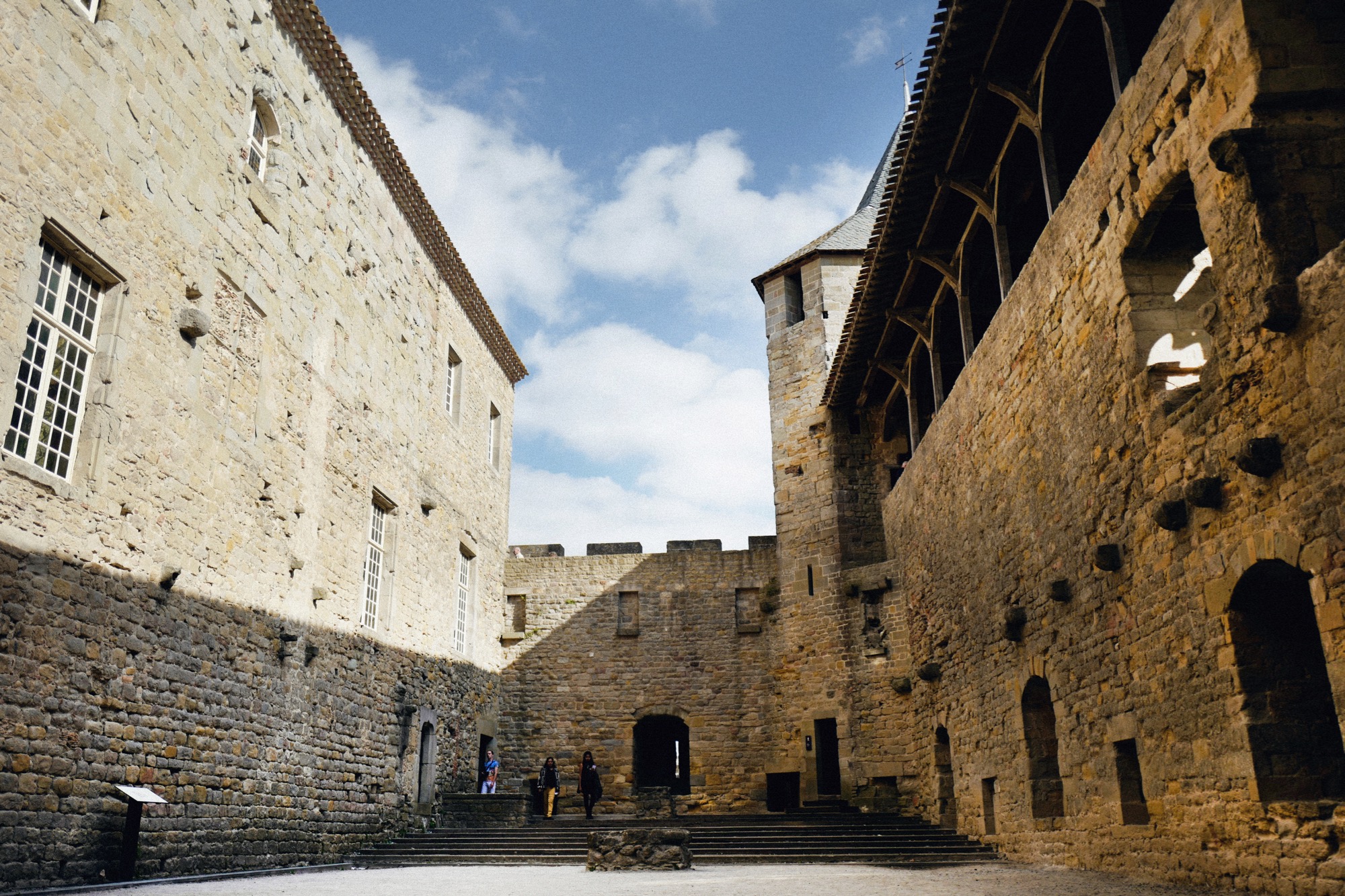
So imagine my surprise and confusion (for someone who is French second language like me) when I arrived in Caracassonne for a tour of this historical fortified city and find my tour guide keeps speaking in the le passé simple…out loud. This wasn’t a play, but what a performance it was. I suppose if ever there were a time and place to evoke the passé simple from one’s mouth, it would be my very quick visit here. Our day there and this place itself seemed to transcend time entirely. It’s hard to understand where either really began or ended, but I will do my best to explain both.
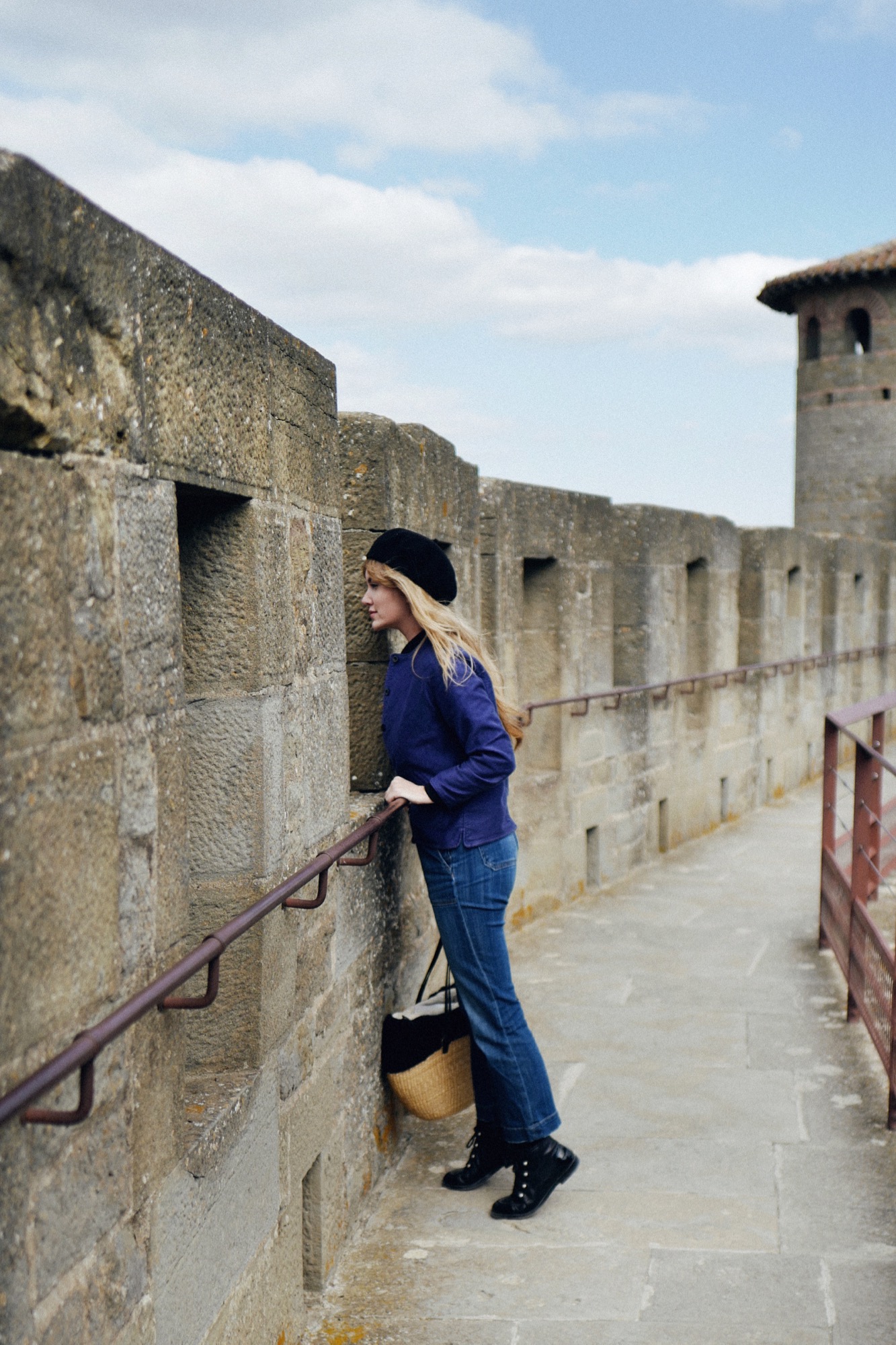
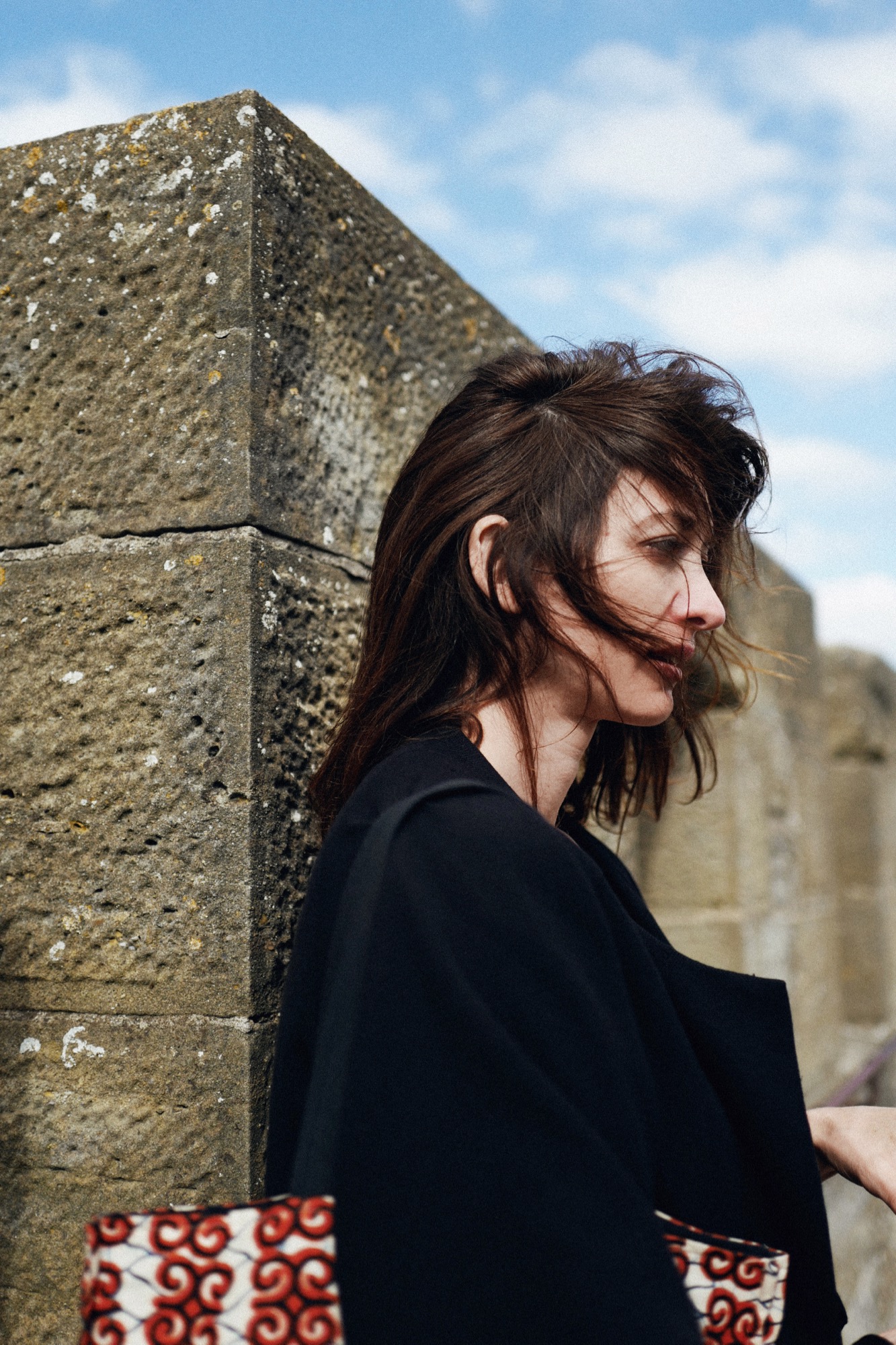
I didn’t know much about Carcassonne going into it this day, but as you approach from a distance you can see the walls of the old city circling the castle on the hill. The precursors to these walls were initially outlined over 5000 years ago by the Gauls before the Romans eventually settled it and fortified the hilltop. Kasia and I could spot it from afar as we approached just in time for lunch after an early morning drive from Avignon. It’s funny that this ended up being our route, because on this scenic drive we actually managed to traverse the majority of the ancient Roman region of Septimania that they seceded to the Visigoths a few centuries after Christ, subsequently losing their hold on Carcassonne.
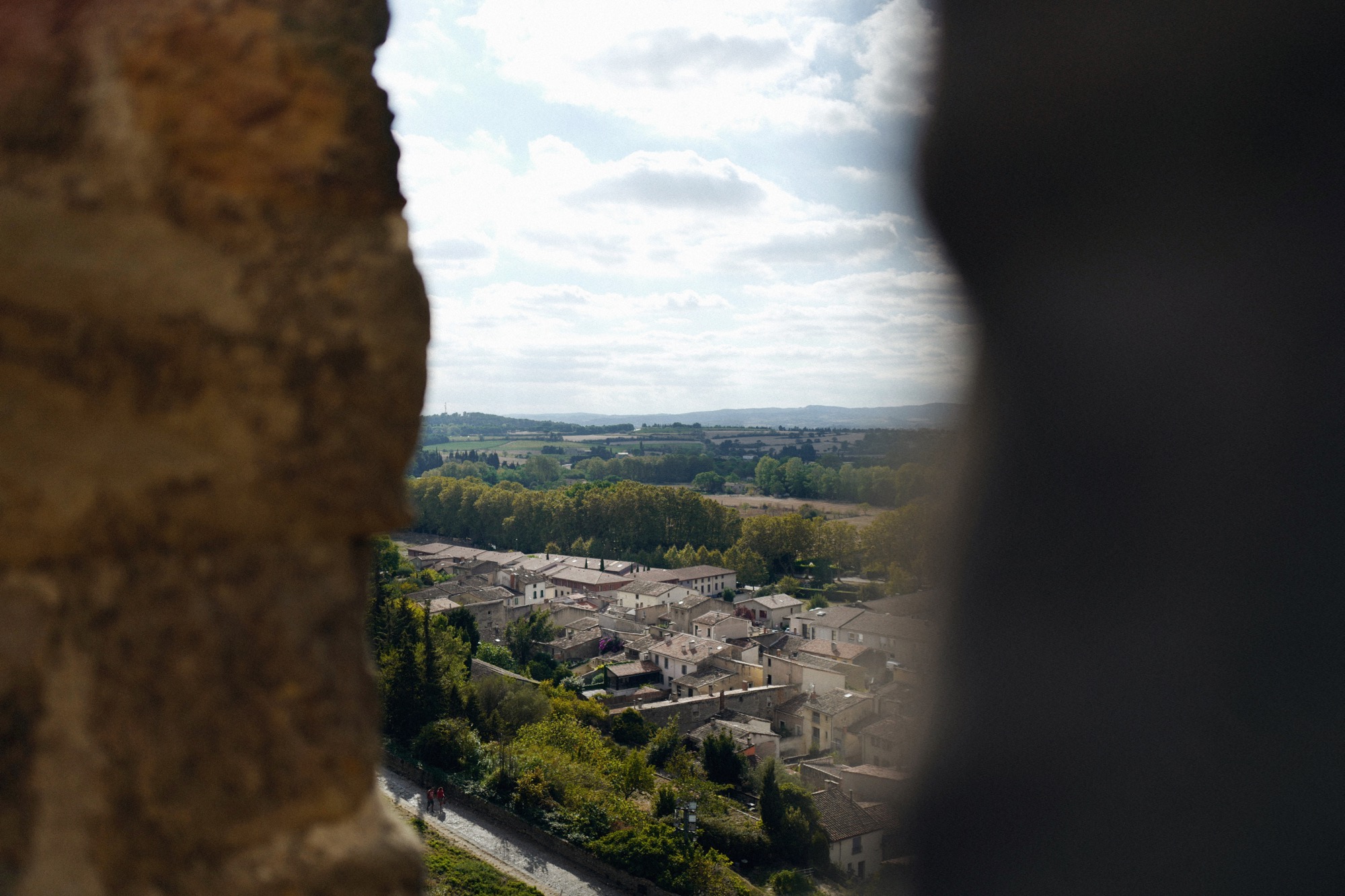
We met our press contact from the local tourism office to share a meal before our marathon visit through the castle. We learned quickly that the thing to eat in this southern region of France is cassoulet, and when in Rome, do as the Romans do. However this place has not actually been part of the Roman empire since that epic defeat by the Visigoths, so in this case do as the Carcassonnians don’t because our local press contact actually became a vegan somewhere in history and cassoulet is anything but vegan. Maybe she just ate too much cassoulet and couldn’t do it anymore? I could understand that. This ultra rich dish of white beans, pork skin, and a variety of other amazing flavors is slow cooked in a deep round cassole until it’s ready to melt in your mouth. It’s as heavy as it is delicious. For the non vegan residents of the region it remains a strong tradition. There are cassoulet cook-offs with century long rivals all boasting superior recipes and battling it out for the title of the best. Topped off with a coffee, it was the perfect meal to fortify us for our journey through five millenniums that afternoon.

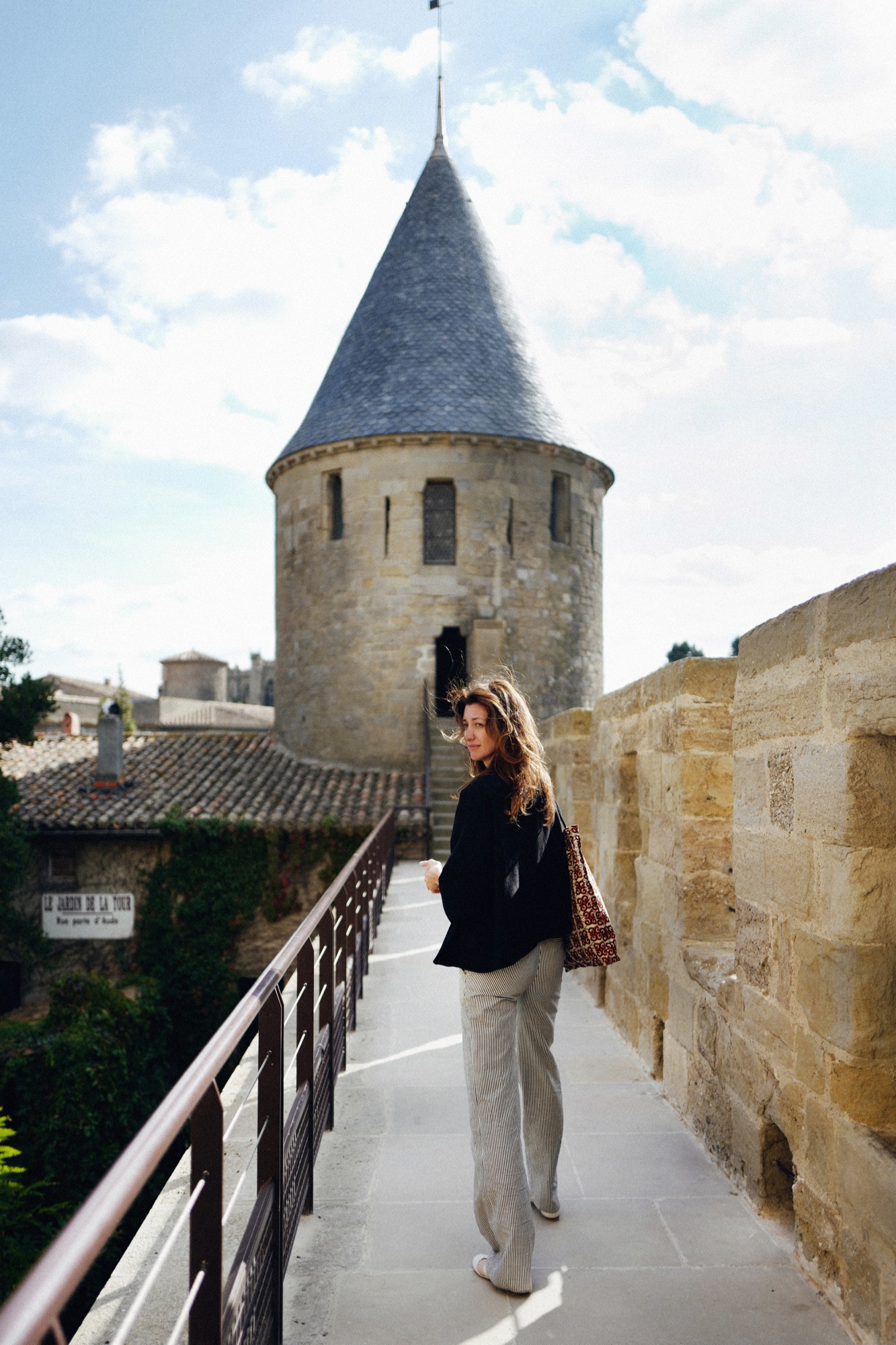
At the entrance to the chateau we met our tour guide. He looked like someone who had jumped out the pages of a Victor Hugo novel, and he talked like one too in his passé simple discourse. Kasia and I followed him into the chateau that was initially built somewhere around the 13th century by the first French kings to rule over it after the defeat of the Visigoths. All in all it has 58 towers, one of which housed the Catholic Inquisition and is still known as “The Inquisition Tower.” Fractions of the chateau walls are notably different. The are still remnants of their Roman origins, while the medieval walls have the tell-tale red brick layers and the shallow pitch terracotta tile roofs. This is a recurring theme in the architecture of the old Carcassonne. The castle and its surroundings upon closer look are like a patchwork or history, the fabric of time sewn together and folded upon itself with holes from battles and failed invasions over so many centuries.

It wasn’t too long after Carcassonne officially become part of France in the 13th century that the British already wanted to take it away. During The Hundred Years’ War, Edward the Black Prince tried to conquer the city, but the fortress was too strong. His quest failed and Carcassonne has remained French ever since. It was demilitarized under Napoleon and the Restoration, and the fortified cité of Carcassonne fell into such disrepair that the French government decided that it should be demolished. The architect Eugène Viollet-le-Duc, already at work restoring the Basilica of Saint-Nazaire here that was first constructed by the Visigoths, was commissioned to renovate it in its entirety. Overall, Viollet-le-Duc’s achievement preserving and restoring Carcassonne is agreed to be a work of genius, although not without its imperfections and being heavily criticized in his own time.
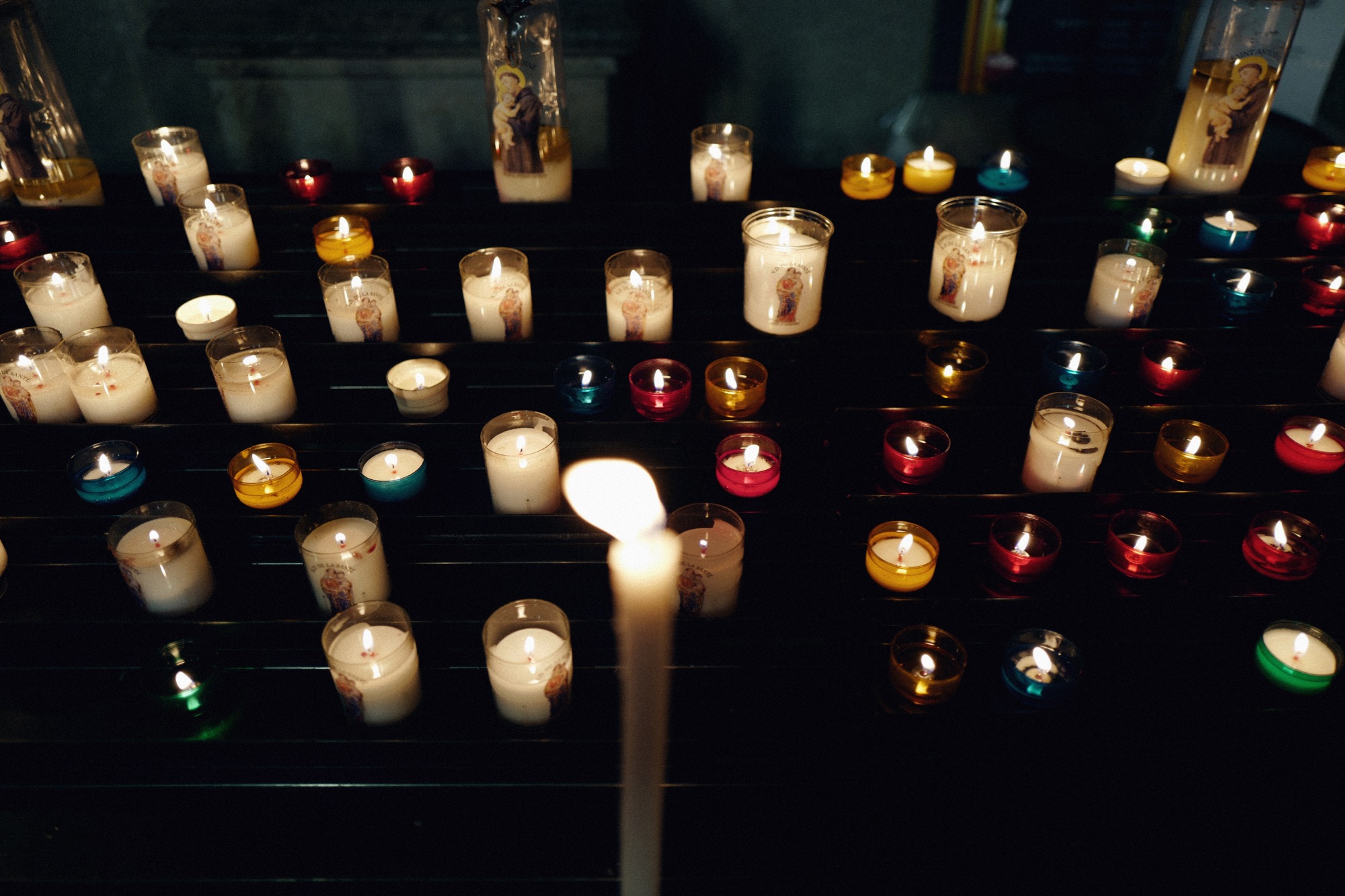
On our visit, there seemed to be no end to this massive castle. Just as you’ve made your way through it you circle back to its beginning and can relive it all again with the scope of another century if you like. Several hours flew by here and time seemed to escape us as we travelled through it chasing our guide, jumping from its many pasts to our present, standing in the breeze on the castle walls, staring out over the region and imagining the city below that swelled and shrunk around this fortress through time.

I cannot pretend to comprehend even a small fraction of the complex history of Carcassonne. Even if I did, I couldn’t fit it on these pages, nor would I want to rob anyone of such an education first hand by journeying here. The reach of religion, ethnicity, empire, and nation that have touched Carcassonne span centuries. Everything is relative and time is no exception. Yesterday can be measured in minutes or millenniums, perhaps a distant past and yet not necessarily remote, open to interpretation with only one exception — it is over and done with. For visitors to Carcassonne today, somehow the ages within these walls all exist simultaneously, as we are left to navigate the pages of its time in this conundrum of the past and present existing all at once. Carcassonne is the perfect passé simple in a place where the past is anything but simple.
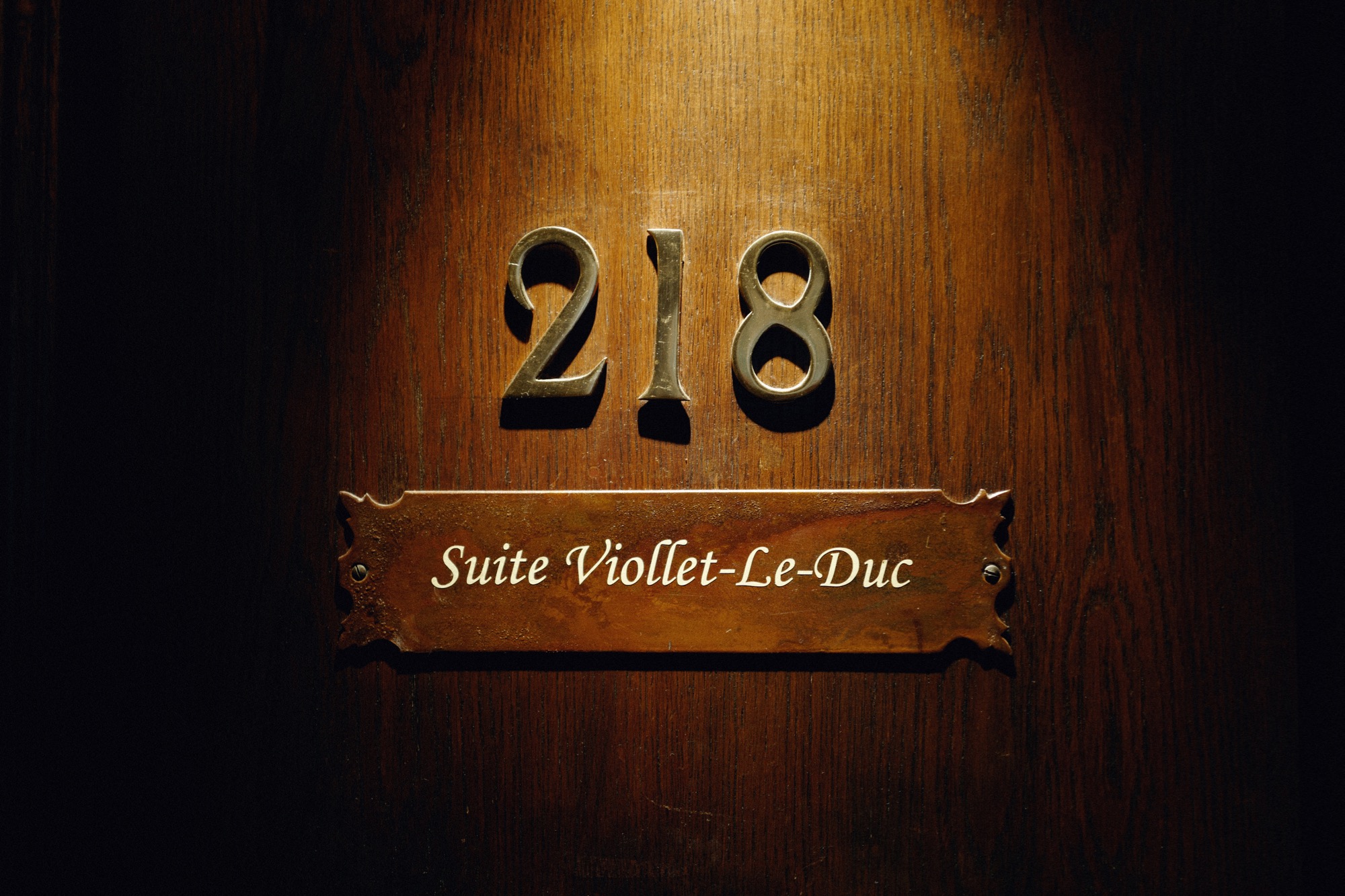
Hotel de la Cité
From the walls around the castle of Carcassonne you can peer over onto a little secret garden. Kasia and I spotted this place and wondered about it, only to be delighted when we later found it was the hotel where we would be spending the night. Sleeping at a five start hotel within a UNESCO world heritage site is a real treat, especially here once learning about its history. Hotel de la Cité is a family owned and run business. It was acquired long ago by the current owner’s mother, and passed down to her children. Her daughter is the general manager and greeted us in the evening for a quick tour to reveal some of the historic hotel’s many secrets.

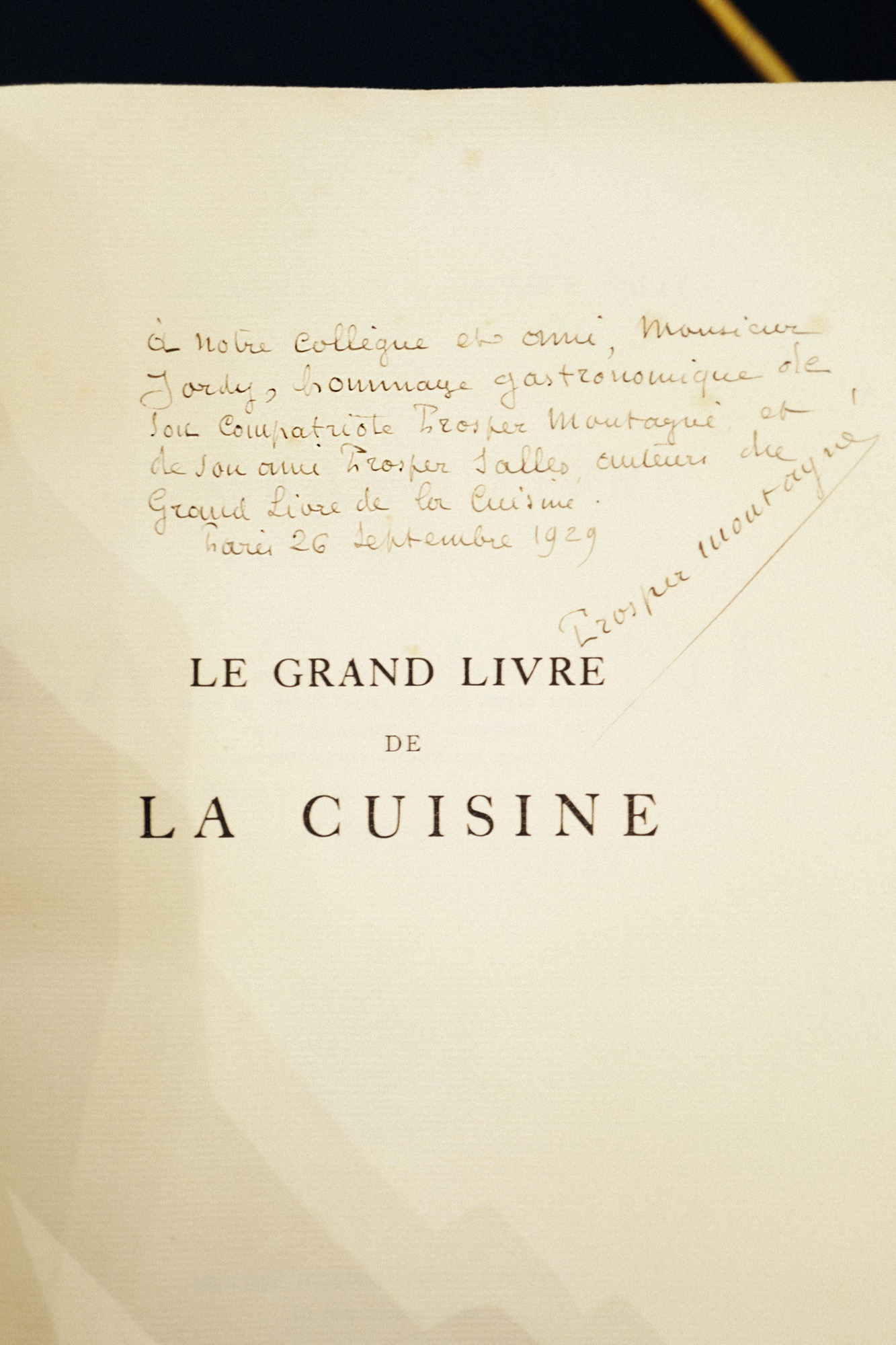
One glance at the guestbook and it is clear that this hotel has long been the choice of the elite who have visited Carcassonne. Walt Disney, Princess Grace of Monaco (Grace Kelly), Frank Sinatra and many more royals, rich, and highly regarded people of the last century have spent the night here in one of its 47 rooms and 13 suites since its grand opening in 1913, including #218 named after Viollet-Le-Duc himself who renovated Carcassonne. The Grand Livre de Cuisine has also been preserved by the family, containing many precious recipes from the kitchen here served over the years.
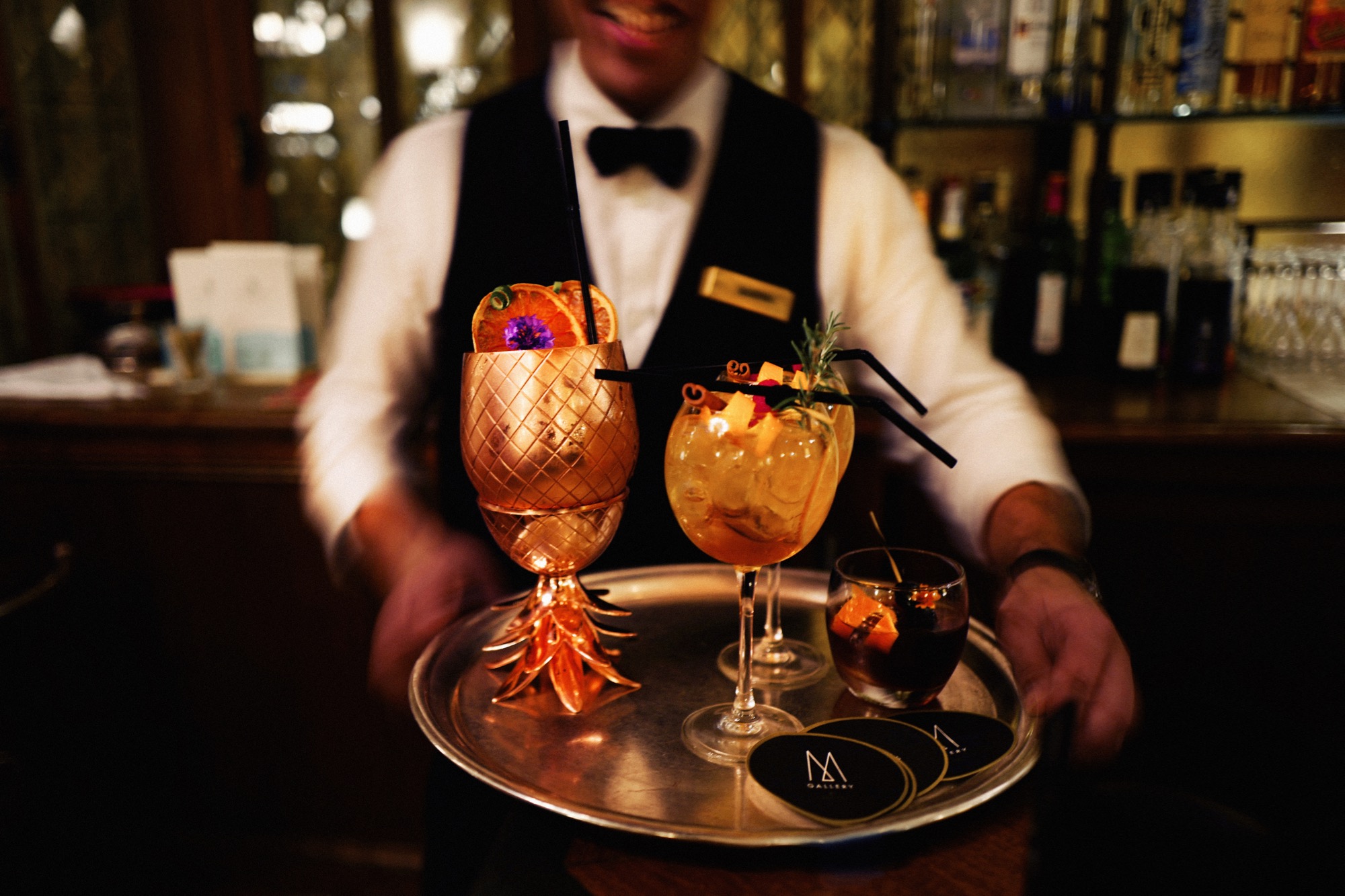
La Barbacane restaurant in the hotel today is a Michelin Star. Kasia and I headed here to debrief after a long day of sightseeing over a delicious five course dinner. We felt we had been mistaken for movie stars with a special menu just for us from the chef. We started with cocktails from the the hotel’s bartender, Gaet, who makes his own vermouth he’s named Rigolo and serves with a huge smile. His cocktails are a works of art and taste as good as they look. Later when we moved onto wine, the house sommelier stayed a while to talk with us about Carcassonne as a major wine region and the nearby vineyards.


At last, I settled into my cozy room that night to enjoy one last view of the castle from my window, illuminated in the night and glowing on the hilltop, before falling into a deep sleep at the end of a long and fascinating day, dreaming of returning to this hotel in summer when the garden pool and terrace with a view or even more inviting.
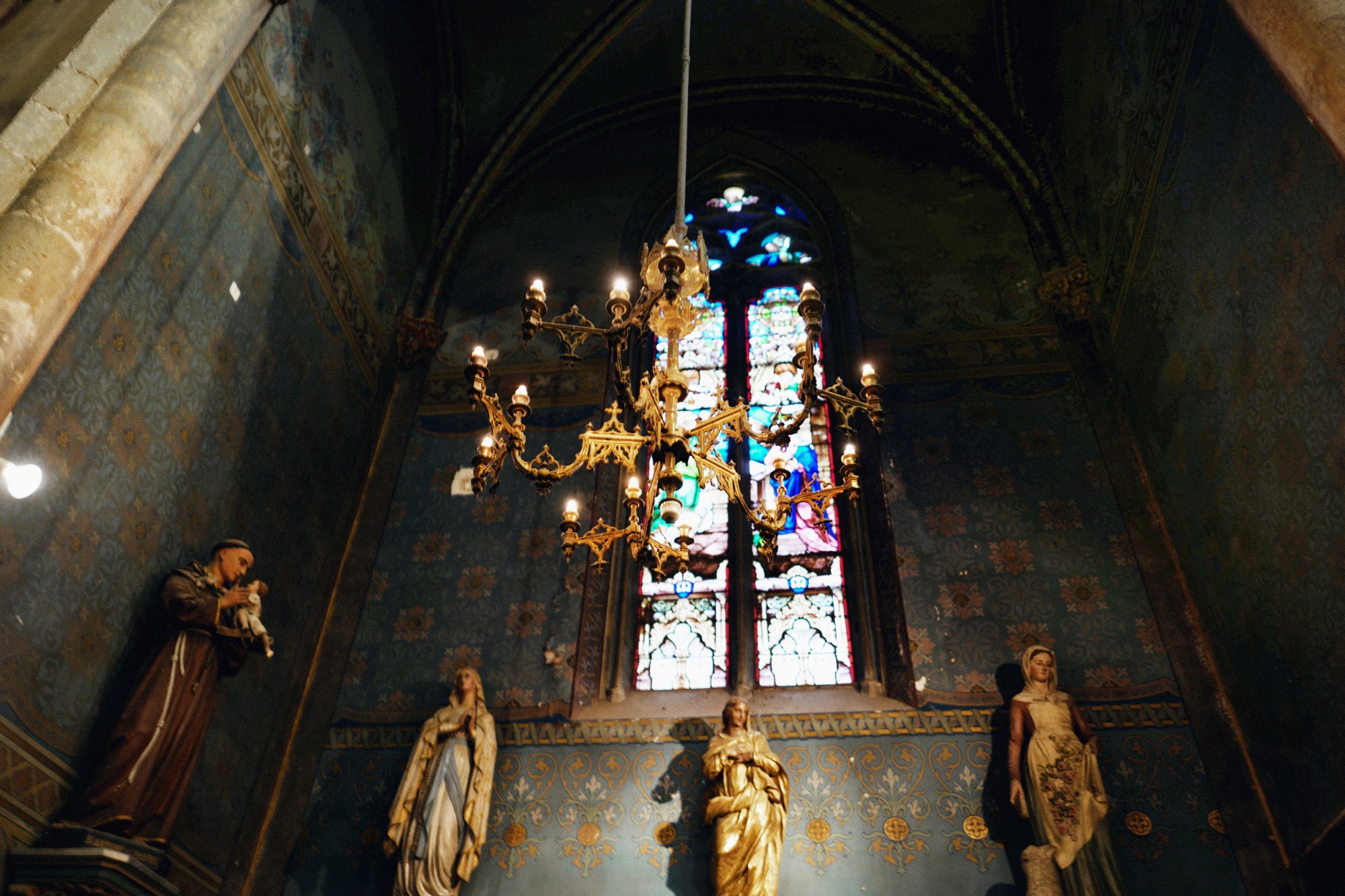
Ville Basse
While the old fortress of Carcassonne is the center of tourism and the most visited area of the city, there is also the charming lower town, or Ville Basse, that is historic although more recent. I regret not having more time to explore this area of Carcassonne and get to know more locals, but we did pop down quickly to get acquainted. The Place Carnot at its center is a good enough place to begin, surrounded by cafés and where you’ll often find the local market. Nearby shops sell regional goods and yet another beautiful cathedral is just steps away.
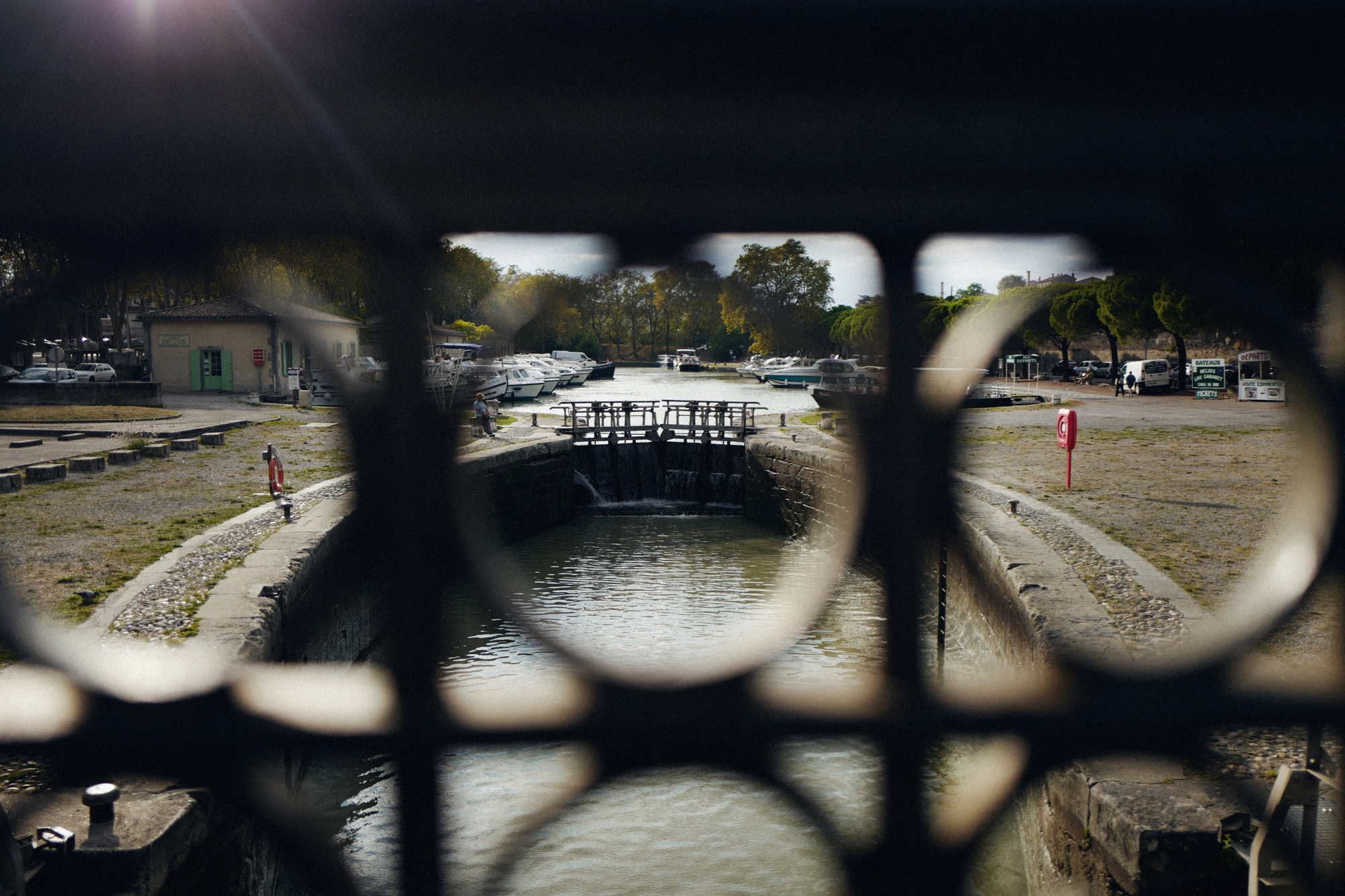
Canal du Midi
One last attraction in Carcassonne is the Canal du Midi. The Canal du Midi is 241 km long stretching across the South of France from the Mediterranean to the Atlantic. Upon its construction in the 17th century, it was considered to be one of the greatest technological achievements in history. As Carcassonne is strategically positioned between these two bodies of water, the Canal du Midi passes through it. Just across from the train station you can watch as barges sail through this system of water ways leveling out their aquatic route. You can take cruises on the canal as well, or charter a private journey across it, stopping along the way in Carcassonne and elsewhere to take in the sites.
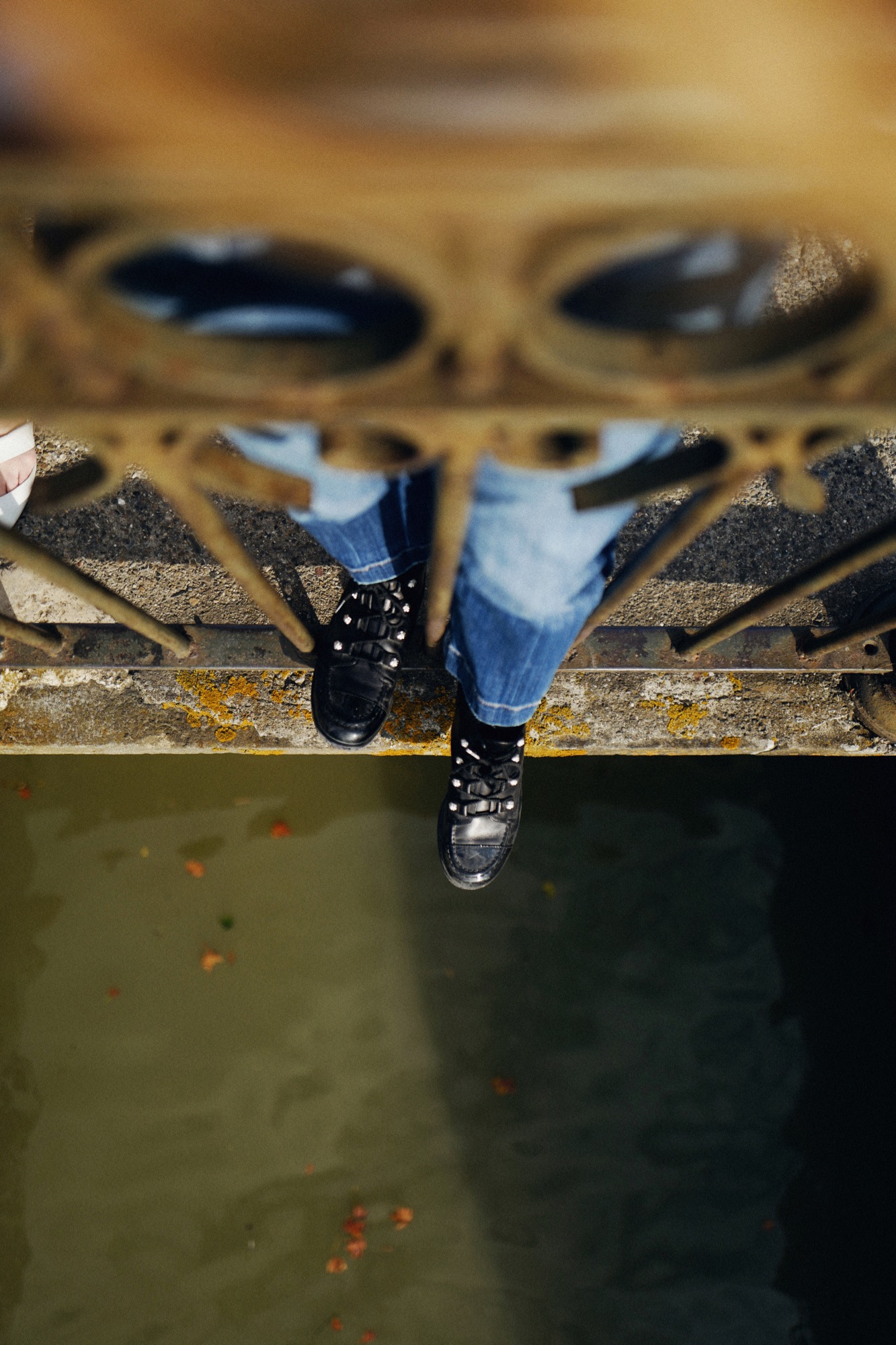
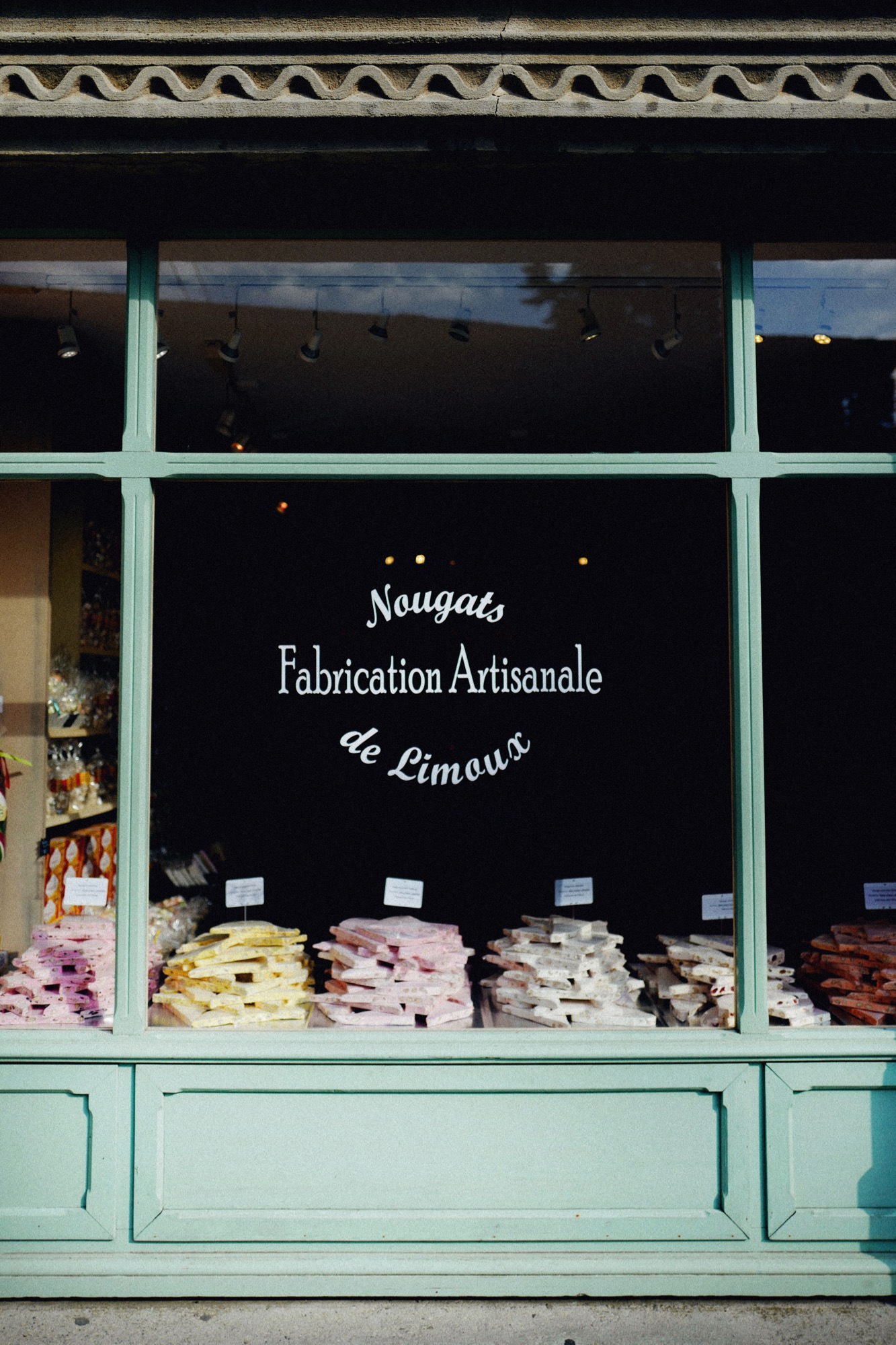
From My Suitcase
Maison Kitsuné jacket, Chanel boots, H&M overalls, vintage beret, Mūun basket, and Kasia Dietz tote.
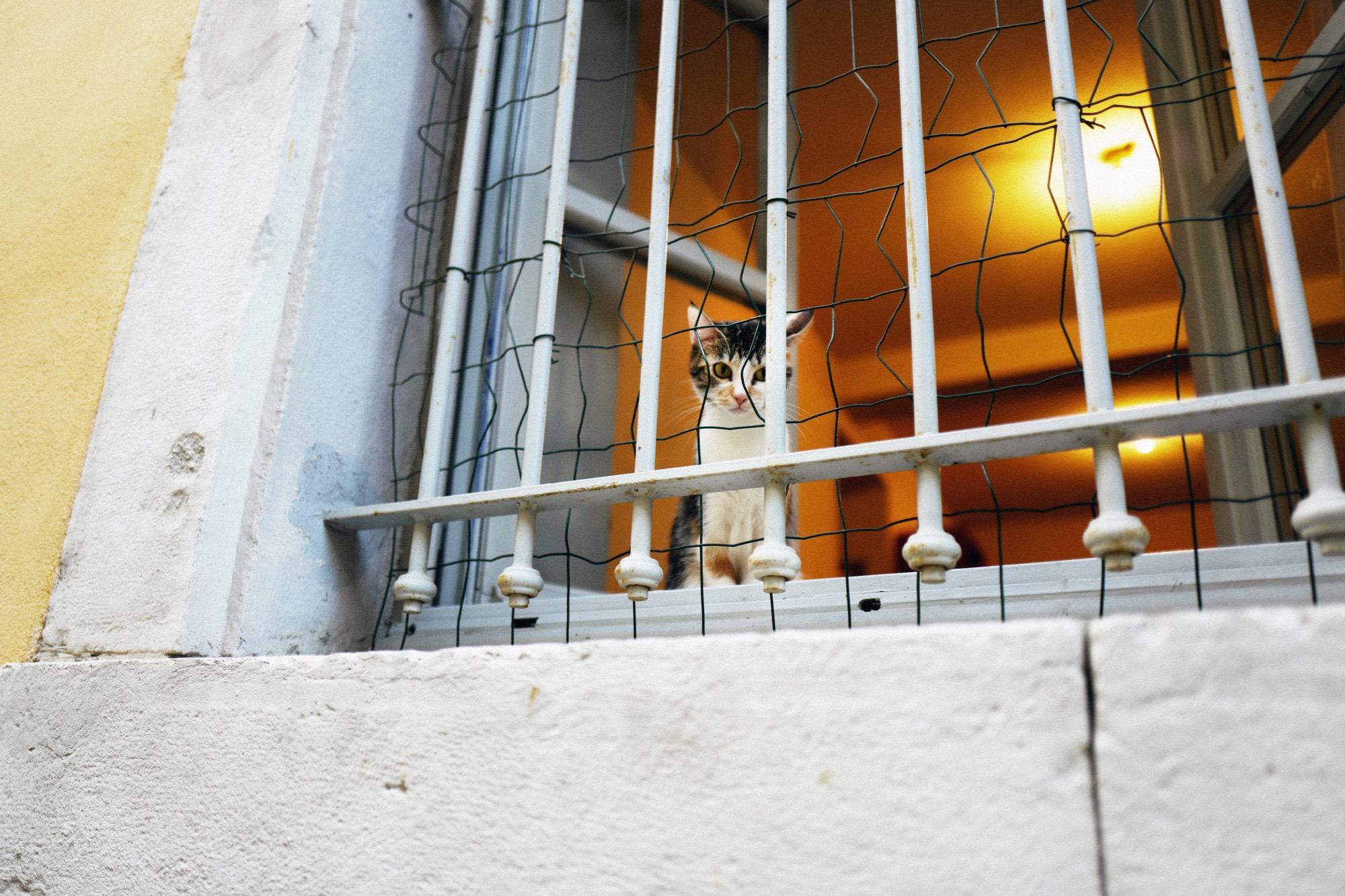


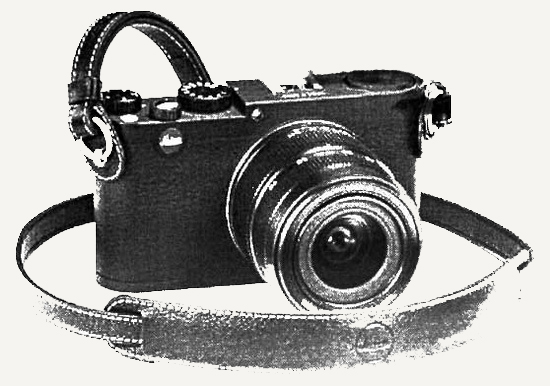

I went to Carcassonne for a short break last June, isn’t it just magical? I felt like I was in a Disney movie!
Becky ⋮ a c c o o o h t r e m e n t s . w o r d p r e s s . c o m
I just loved this post, made me miss my days in France, but also made me very excited to go back. Wonderful, as always!
Julia
ExploresMore.com
We spent two days in Carcassonne a few years ago without the guided tour, and I think perhaps the guided tour is a must! Wandering around on our own led mostly to drinking mojitos and eating cassoulet sans all the historical behind-the-scenes.
No wrong and right way to travel! As long as you had a nice time is all that matters 🙂 I wish my tour had mojitos too! Haha!
So, so beautiful, Haleigh. I hope to visit here someday. xo <3
Lovely post!
-Cheyanne
http://www.lifeofcheyanne.blogspot.com
Merci ! pour ce superbe reportage sur Carcassonne, ville aux deux sites classés Patrimoine Mondial de l’Unesco; la Cité médiévale et le Canal du Midi.
I love your photos. The South of France is so beautiful!
http://www.carolina-aurelie.de
You write beautifully. I’m so impressed that you managed to make the passe simple sound so poetic and dreamy! This is a beautiful post. Thanks for sharing your talents!
Gorgeous post! I’m going in June for a 4-day drawing stage. Now I can’t wait!
It’s so cool that you have come close to where i am living… Very nice to read your reaction
Great post! I cannot wait to visit Carcassonne.